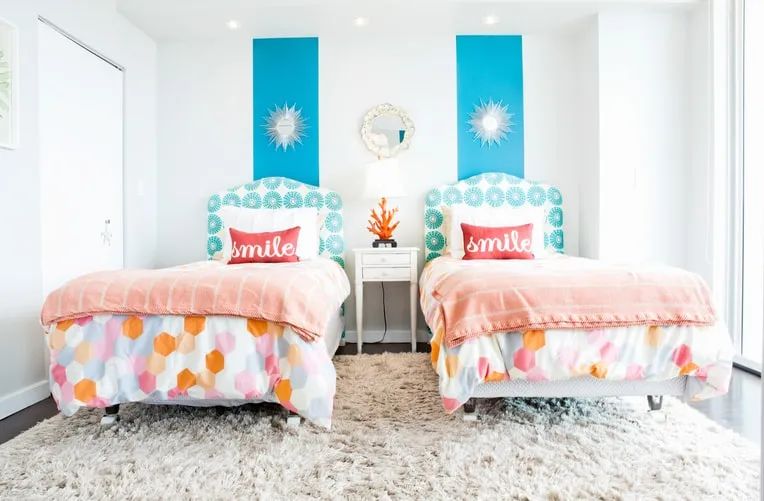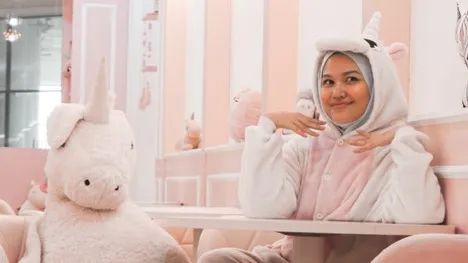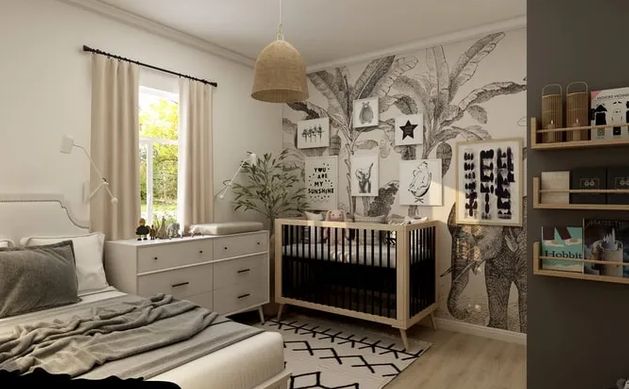
photo by Blake Woolwine via Unsplash
Bold & Beautiful Kids’ Rooms
December 2, 2020 | by martha oschwald, guest contributor
If you ask a kid what their favorite color is, chances are the answer isn't eggshell. Why should your child's bedroom be limited to sparse neutrals? Below are some ways to liven up a kid's bedroom while maintaining your sanity and property value.
General tips
- Don't be afraid of color
- Choose a theme
- Be age-appropriate
- Embrace imaginative ideas
- Design is fun! Let it be.
Sometimes, parents are afraid of color because they think their child might outgrow it. That’s true but it shouldn’t drive your design choices. Remember that painting a wall isn’t the end of the world and interior design is supposed to lift your mood. Don’t shy away from a little color, especially when designing for kids
Another common design scenario is parents who don’t know where to begin. People can feel overwhelmed by the process or afraid of making a mistake. You can simplify things by choosing a theme or a color palette for each room. Once you’ve chosen a direction, everything else becomes easier to handle.
Try to stay age-appropriate whenever possible. Younger kids might like stuffed animals, cartoon characters or toy themes whereas teens might like to hang their own posters, bulletin boards or pictures. Your child’s taste might change over time but that’s okay! Your goal is to live in the moment and design accordingly.
Treat your house like a home instead of a hotel. It’s not that you have to go crazy; just be open to a little bit of artistic expression. Don’t let your sense of responsibility and level-headedness keep you from making the most of your digs.
Be Imaginative
Wall ideas
- Let your child choose a color or theme
- Shop for child-friendly wallpapers
- Consider a wall mural
- Use chalkboard paint for artistic kids
When thinking of a space, designers often consider major areas such as the floor, walls, windows and furniture. Selecting a wall color or pattern is often a smart first step when designing a room. The good news is kids are happy to help out! Just ask them what colors or styles they’d like and see where it takes you.
If you’re shopping for younger kids, take a look at what child-friendly wallpapers are available. You’re bound to come up with a handful of ideas based on the creative prints, themes and colors.
Don’t forget to check out some of the other wall designs on the market, especially for creative or child-friendly spaces. For example, some wallpapers are designed as floor-to-ceiling murals while giant wall stickers have a similar effect. Patterns like jungle prints, forests, beaches, or other outdoor scenery can transform your four walls into a magical space.
Making the most of wall space also opens the door to creativity. While you may have heard of chalk paint (which is a matte finish for a shabby chic look), chalkboard paint is the way to go. The painted surface mimics a chalkboard so kids can draw to their heart’s content. Dry-erase wall decals offer a similar spin on parent-approved house art.
Storage tricks
- Remember child size and height
- Keep it cheap & cheerful
- Use durable materials
- Think seasonally
In terms of practicalities, you’ll need to optimize storage in a child-friendly way. Consider the same uses as you would in an adult room like dressers, shoe storage, and accessory containers. Just remember to make things the right height for a pint-sized person to see and reach.
Keeping things cheap and cheerful is a good place to start. Kids are often into bright colors and happy vibes while there’s no need to break the bank. We all know that accidents happen so do yourself a favor and stick to inexpensive or durable storage options.
Last but not least, consider separating clothing by season. Being able to stockpile half of your kids’ clothes means they’ll have more usable closet space and fewer reasons to wear swimsuits in winter. Consider having an accessories station for kids to store their hats, scarves and gloves in winter or a cubby system for shared closets.
Final thoughts
When it comes to designing a kid’s room, keeping things fun and fearless is the way to go. Getting started is often the hardest part so choose a theme and run with it. Add some practical touches like height, material, and seasonal storage and you’re in business.
Do you have any other tips and tricks you’d like to share? What ideas have worked well for you and your family? We’d love to hear from you. In the meantime, thanks so much for stopping by, keep it fun and stay safe!







